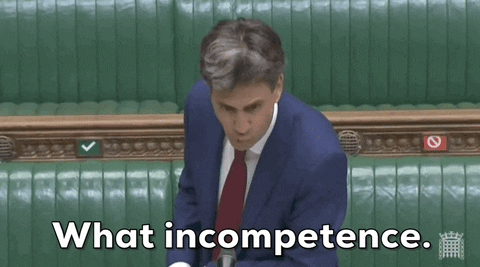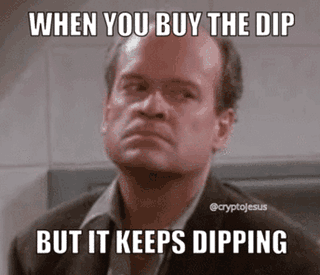All Out: Risk and Reward, Wells Fargo Fined (again), Jon Corzine
The Capital Asset Pricing Model: Risk, Reward, and Reasons
We were reading an article last week and the author quoted the below passage:
“The temptation is to think that if risk and reward are correlated—if you can reach for higher returns by selling your investment-grade bonds and replacing them with stocks, or selling your large-cap US stocks and replacing those with wilder emerging market stocks—that all forms of risk-taking are rewarded with higher returns. But this isn’t true: the expected return of a single stock of average volatility is the same as the expected return of the market, but the volatility of one stock, compared to a diversified portfolio, is much higher. And thanks to the relentless math of “volatility drag,” i.e. the observation that you don’t offset a -50% loss until you’ve made a +100% return, the expected overall outcome from this particular form of risk-taking is negative.
And there are other forms of unfavorable risk/reward tradeoffs: paying higher fees for exposure to the same asset class, for example, is a straightforward cut to returns with no attendant reduction in risk. In the general risk/reward tradeoff, there are some extreme cases where things don’t work as planned: the longer-term a bond is, the more it’s a bet on interest rates, and the more it’s excess return is compensation for taking interest rate risk. But 30-year bonds don’t get returns quite commensurate with their risk—because when bond portfolio managers want to make a big bet on rates, that’s what they have to bet on.”
This is a great passage that hits on a couple of important points. The first is that higher risk does not necessarily equal higher returns. Sure, if you want to earn higher returns you generally have to take on more risk. But this doesn’t mean that higher risk is always compensated. Think about that for a second, if riskier investments were always compensated with higher returns, then they wouldn’t be higher risk… The higher expected return is compensation for the possibility that the investment actually loses money.
This is precisely why diversification works. In theory a diversified portfolio is less risky than a single stock. So, if higher risk was always compensated, then you should just own the most volatile stock out there (not investment advice! But please don’t do that). Diversification works precisely because it gets rid of uncompensated risks and leaves the risks you are actually paid for.
The other interesting point he makes is that not all risks are compensated equally. In theory all assets should have the same risk adjusted returns. If there was an asset that had a higher risk adjusted return than others, then investors would buy more of that and drive the price up until the return/risk was equal to other assets. However, in practice we see this doesn’t happen. There are numerous papers documenting an anomaly that lower risk assets tend to have higher risk adjusted returns. This contradicts the most basic principle of finance, so how can this be? Well, the investing world isn’t perfect, there are transaction costs, taxes, and most importantly not everybody can use leverage. Assets that tend to have higher risk adjusted returns tend to be less volatile assets. However, even if the risk adjusted return is high, the total return may be low. Therefore, you would need to apply leverage to the asset for it to make an attractive investment. Since not every investor can use leverage, they shun these assets because of the low returns. If an investor cannot use leverage, then they will tend to move into more volatile assets in order to increase returns. This means that these assets will be more in demand which will drive the price up and expected returns down. This is why for example, 30-year bonds have lower risk adjusted returns than 3-year bonds. If you want to invest in bonds and earn higher returns but cannot use leverage, then you are left with no choice but to invest in the 30-year bond.

Wells Fargo Settles with SEC for Charging Excessive Advisory Fees
Wells Fargo has been in the news quite a bit recently. They were fined for opening customer accounts without the customers knowing about it, amongst other things. It got so bad that they were even prohibited from growing their asset base until the widespread problems were fixed. They are being fined once again. They will need to pay $35M (nothing compared to the previous $3Bn fine) for overcharging their clients. This isn’t so much of a case of malintent, but rather one of sheer incompetence and outdated systems.
Basically what happened is that advisors would offer lower fees to certain clients. The process to open accounts was so archaic (sending papers through fax machines) that often times these lower fees were not properly inputted into the computer systems. Therefore, the clients who thought they were paying X% were actually paying something greater than X%. This is a failure in whoever processed the faxes that didn’t notice the lower fee arrangement, and a failure of the advisors for not checking in their systems if the accounts had been set up correctly.

Wells Fargo Swapped Some Digits
Another Wells Fargo case (a bit old) although in this instance there was malintent. This happened a while back, but FX traders were doing two things to harm their customers. The first was that they wouldn’t inform their customers immediately after receiving an international wire. Therefore, they had some leeway at what price they converted the incoming money. For example, if you received a Euro wire at 10am when the price was 1.05 Euros to the dollar, the desk would wait until 4pm to inform you about the wire. They could then essentially price the conversion at the best price of the day (best price for the bank, not the customer).
Not only that but they also switched digits on the pricing. So, if the real price was 1.0123, the FX trader would swap the digits 1.0213. This way clients quickly looking over pricing would probably not spot the difference, but it meant the bank got a better price and the customer got a worse price. Like we said above, there clearly was malintent and they were ripping off their customers. Pretty lousy culture if this type of thing is happening on a regular basis.

Jon Corzine’s Critics Want Him Banned From Futures Trading
Jon Corzine used to be the head of MF Global. MF Global, if you can recall, was a broker that went spectacularly bankrupt in 2011. They made a series of bets that went awry, but the real problem was that they transferred customer money into their own accounts to cover some of their liquidity shortfalls. Jon Corzine became CEO and Chairman in 2010 and was the head of the firm during its collapse. He reached a settlement with the CFTC and agreed to pay a $5M fine for the misuse of customer funds, and was prohibited from registering with any agency or working as a futures commission merchant. He was able to run a commodity pool operator, which he used to launch a hedge fund some years ago. He has raised just north of $500M for his fund. Short memories on Wall Street indeed…
|
|





